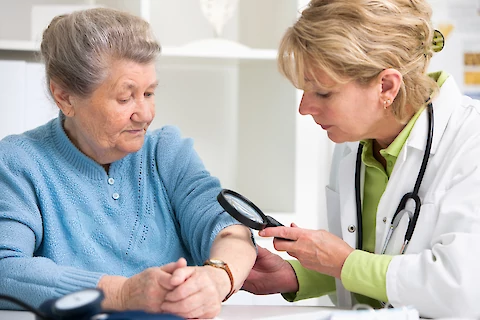
Melanoma represents the deadliest form of skin cancer. Seniors need to understand the risk factors surrounding melanoma and how aging may increase the likelihood of contracting this disease.
This blog post discusses the most common and impactful risk factors for melanoma in seniors. We'll also review the steps for long-term skin health and cancer prevention. So, whether seniors are soaking up the sun in San Antonio or spending their days in the shade in Helotes, read on to learn how to protect them and maintain healthy skin as they age.
Risk Factors for Melanoma
Some of the most common risk factors that may increase the chance of melanoma in seniors include the following:
- Age - Most melanoma diagnoses occur after the age of 50.
- Family history - A close family member with melanoma significantly increases seniors' risk for this skin cancer.
- Extensive sun exposure and chronic sunburns - Seniors who spend a lot of time in the sun or suffer from intense sunburns as a child increase their chances of melanoma.
- Skin types - Fair skin people, especially those with light-colored hair and eyes, are typically susceptible to melanoma.
- Moles - An abundance of moles, especially atypical moles, increase the chances of melanoma.
- Immunocompromised - A weakened immune system especially puts seniors at a higher risk for melanoma.
Keeping Seniors' Skin Healthy and Preventing Skin Cancer
Seniors and others with significant risk factors must follow the steps to detect and prevent melanoma.
1. Schedule regular skin cancer screening with a dermatologist. Talk to a dermatologist about seniors' risk factors for melanoma to determine how frequently they need a full-body screening.
2. Use sunscreen with an SPF appropriate for seniors' skin type. If applied frequently, an SPF of 30 works for many people. However, seniors with fair skin should consider using sunscreen with an SPF of 50 or over. Protective clothing and large hats also help protect against sun damage and skin cancers.
3. Perform regular skin self-examinations. Early detection of melanoma allows for treatments that save lives. Self-examinations should occur in front of a full-length mirror and include a thorough examination of the whole body. Seniors may need to use a hand mirror or ask their partner for assistance with difficult-to-see places. For melanoma, seniors should look for atypical moles using the ABCDEs of melanoma as guidance:
- Asymmetry: The two halves of the mole do not match.
- Border: The mole's edges are irregular or blurred.
- Color: The color comes in multiple shades but often looks darker than other moles. The melanoma mole may display numerous colors.
- Diameter: Typically, the mole measures about 6mm or the size of a pencil eraser.
- Evolving: The mole changes in appearance and looks different than other moles on the body.
If seniors see any of the ABCDE features on a mole, it's critical to make an appointment with a dermatologist.
4. Maintain a healthy lifestyle. A nutritious diet, daily exercise, adequate sleep, and stress management will help reduce seniors' risk for melanoma.
We Can Help
For seniors in San Antonio, Helotes, Alamo Heights, Kerrville, Castroville, Converse, Floresville, La Vernia, Von Ormy, and Poteet, Senior Helpers Greater San Antonio will help in managing their melanoma risk factors. Our caregiving services will assist seniors in scheduling and attending skin cancer screenings, implementing sun protection strategies, as well as maintaining overall health and well-being.
If you're a senior or caregiver in the Greater San Antonio area, don't hesitate to contact us for support in managing your melanoma risk factors and maintaining overall health.